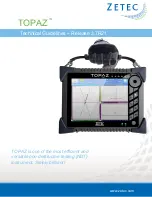
phantom power (if needed). If the mic has its own preamplifier, connect it to a line input of the
audio card. Finally, connect the DSP device to the loudspeaker system.
Therefore, in the FIR Wizard “Wiring and levels” page, select the ASIO audio card and the right
input/output channels. using the list box at the top of the screen,
Now, click the “Test” button to start the microphone test, making sure the loudspeaker amplifier
volume is low. Then, start rising the amplifier volume untill a strong but not annoying “sine sweep”
is heard. Click “Test” button again and adjust the microphone preamp gain until the measured
signal peak reach roughly the -6 dBFS value.
If during the microphone test some glitches occur, it is probably due to a latency issue of the sound
card. To solve the problem, open the sound card control panel clicking the “ASIO Control Panel”
button and try to choose an higher latency value (or, equivalently, a large buffering).
Click “Next” button and you are ready to measure the IR of the loudspeaker.
IR Measurement
Clicking the “Measure IR” button at the top left of the screen, the measurement process starts and
an
activity progress bar shows the activity completion status. Wait in silence for the process
completion. After the sine sweep, the Wizard starts the IR computation and the measured IR is
plotted on the left graph with its peak centered on zero, while the magnitude, group delay and
wrapped phase frequency response is shown on the right graph..
Summary of Contents for LPP-480F
Page 1: ...User Manual LPP 480F...
Page 49: ......
















































